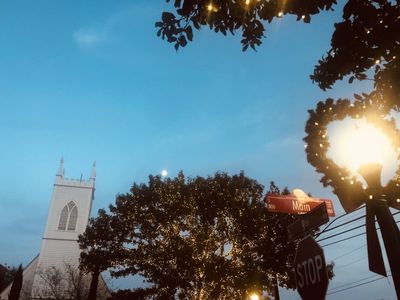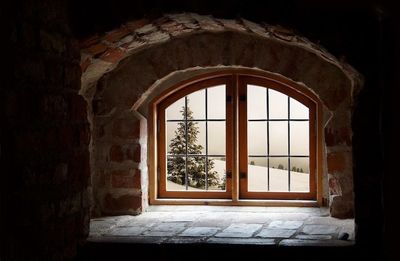I was so happy to read through your comments to all of the great posts since the launch of Simple Organic. Many of you expressed your desire to start a vegetable garden this spring as a way to supplement your family’s purchased organic produce and to decrease your carbon footprint. And really there is no better way to “eat local” than to walk right outside your back door.
You are in good company! Increasingly, families, especially mamas, are seeing the benefit of cultivating their own food. This practice isn’t new, but thankfully it is gaining popularity again. With a few simple tips, you’ll be growing your own food in no time.
So let’s get started!
Tip #1: Start Your Seeds Indoors Using Repurposed Containers
One way to get a jump on your spring garden is to start seeds indoors while it is still too cold outside. And it is a great way to remind yourself that spring is on its way. Nothing beats the winter “blahs” like watching a little seedling poke its head through the soil.
There are many household items you can recycle to hold your little seedlings until they are ready for transplant outdoors. Some repurposed containers can even be planted right into the soil with your seedling. Other containers will have to be washed and saved for next year or put into the recycle bin. Below is a list of some household items that can be used to start seeds.
Cardboard egg cartons
Simply fill them with soil, plant your seeds. When it is planting time, cut the individual “egg cups” apart and plant the whole thing into the prepared hole. The cardboard will eventually decompose and hold valuable moisture around your plant.
Toilet paper/paper towel rolls
Cut the rolls into rings 3-4 inches tall. Place them on a cookie sheet, fill them with dirt and plant your seeds. When you are ready to transplant the seedlings, use a spatula to lift them off the cookie sheet and into the garden.
Newspapers
Make your own small seedling pots out of newspaper using a tin can or glass jar. Dave’s Garden has a great Youtube tutorial that will show you how.
Clear plastic fruit containers
These containers act like mini green houses and are my kids’ favorites for starting seeds. Simply fill the container full of soil and sow your seeds. No need to poke holes for drainage, most of these containers already have small holes in the bottom. The smaller, shallow containers can hold around 4 plants and the larger ones can hold 6 or so plants. When it is time to transplant, gently turn the soil out near the prepared hole and plant.
Dixie cups, tin cans and yogurt containers
These all work well for single plants with large root systems like tomatoes or peppers.

Photo by Eren Hays San Pedro
Tip #2: Start Making Your Own Compost
com·post (kmpst) n. 1. A mixture of decaying organic matter, as from leaves and manure, used to improve soil structure and provide nutrients.
I know decaying matter and manure is not the most glamorous topic to cover. But all good gardeners know that homemade compost is worth its weight in gold. Compost is essential in your garden if you do not want to use chemical fertilizers. Besides…composting is a great way to recycle organic waste that would otherwise go into the garbage can.
And believe it or not, if you make your compost correctly there is no nasty smell.
There are many container options for compost. I use a purchased compost bin next to our shed in the backyard. You can make your own out of recycled wooden pallets or you can use a garbage can. There are even some attractive counter top versions.
Now, what goes into making compost you ask?
- Include: leaves, fruit and vegetable kitchen scraps, grass clippings, egg shells, coffee grounds, tea bags, shredded news paper, and wood ashes (if the wood did not contain chemicals)
- Avoid: meat and fish scraps, weeds, dog or cat waste
Tip #3: Location, Location, Location
Where will your seedlings go once they are up and growing?Starting From Scratch
If you are turning part of your lawn into garden area, newspapers and brown paper sacks are your friends for “no-till” garden beds. To create a new planting area without the work of digging, just mow the area as short as you can. Then spread the area with 6-10 layers of newspaper or brown paper bags. Top it with enough compost or soil to hold the paper in place.
Over the next few months, the paper will smother the weeds and grass below and decay into the soil. You now have a pristine planting bed ready to receive your veggie seedlings when it is time.
Containers
You can plant almost anything in pots or containers. And almost any container can be used as a planter (as long as you drill drainage holes in the bottom first). If you will be planting in pots or containers, you can use packing pellets, newspaper, pine cones or other material in the bottom of your pots to save soil and make your pots lighter and easier to move around.
Raised Beds
If your soil is poor (like mine) or you need more space than containers will provide, raised beds are for you. By building your garden up instead of down, you are able to control weeds, prevent soil compaction, and provide good drainage.
You can use almost any repurposed material for the sides of your raised bed. My first year gardening at our current home, I even used repurposed bi-fold doors. Wanna see?
If you need more information on when to begin your seeds and when to transplant them, You Grow Girl has a great Seed Start Chart to download. You simply put in your area’s last frost date and the spreadsheet calculates the dates to sow seeds indoors and the date to transplant them out into your garden.
Get Growing!
Many of the contributors to Simple Organic are accomplished gardeners. So if you have questions, please ask! We would love to hear about your plans.
Resources For Further Reading:
You Grow Girl
Square Foot Garden
What are you planning to grow this year? Maybe it will be your first garden? Are you looking forward to trying some new heirloom tomato varieties?


